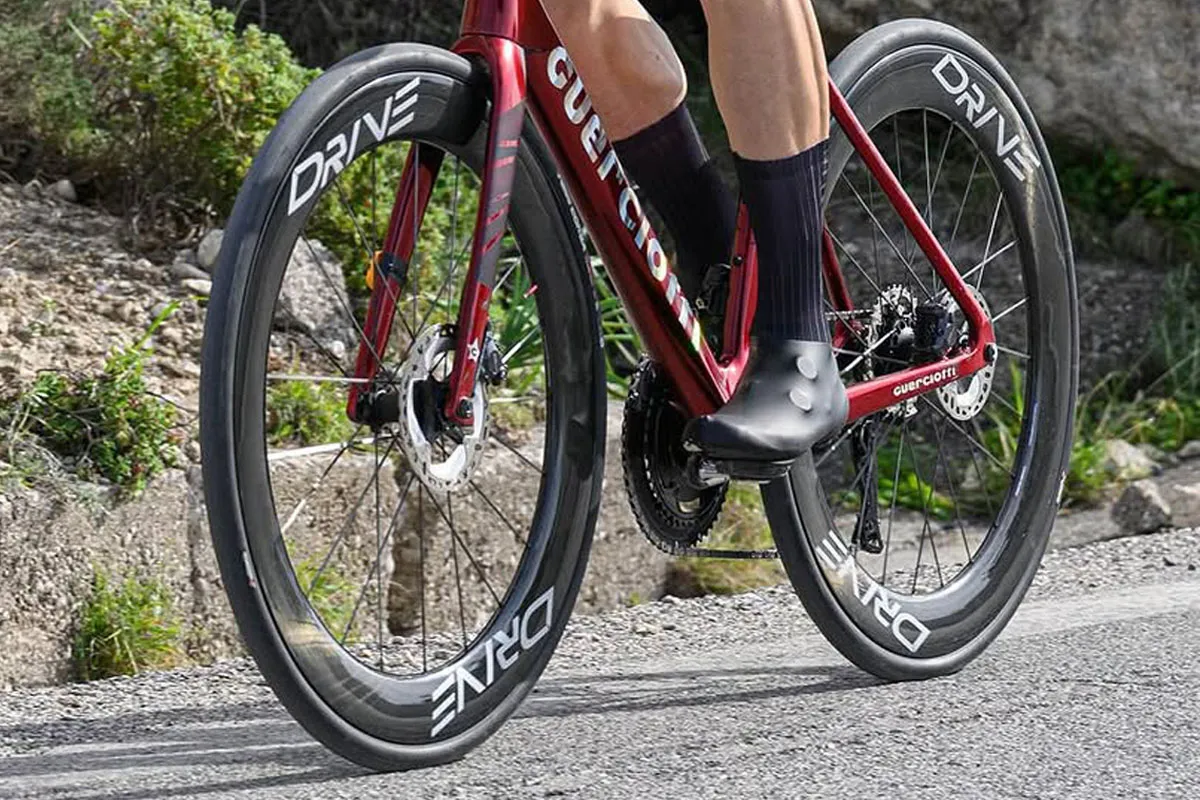
Foot numbness is a prevalent and often debilitating issue for cyclists, affecting riders across all disciplines. While some dismiss it as a mere inconvenience, persistent numbness can significantly impact performance, efficiency, and long-term comfort. The underlying causes of foot numbness in cycling are multifactorial, often stemming from a combination of biomechanical factors, improper equipment, and environmental conditions. This article delves into the primary causes of foot numbness, the physiological mechanisms at play, and evidence-based solutions for resolving this issue.
Cyclists whether road riders, mountain bikers, gravel enthusiasts, or commuters—need to address this issue proactively to maintain performance, prevent injuries, and ensure comfort over long distances and varying terrains. Understanding the root causes of foot numbness and how to mitigate it is crucial for achieving sustained, pain-free rides.
Shoe Fit and Footwear Considerations
The Influence of Footwear on Foot Numbness
Footwear plays a critical role in the development of numbness during cycling. Cycling shoes, particularly those with stiff soles designed for power transfer, can create significant pressure points when not properly fitted. Footwear that is too tight, too narrow, or excessively stiff can impair circulation and compress nerves, particularly in the forefoot area. Over time, this restriction leads to numbness, tingling, and discomfort, which can significantly reduce a rider’s ability to perform efficiently.
Biomechanical Impact
Cycling shoes that restrict natural foot movement create focal points of pressure, particularly in the metatarsal region. The pedal stroke places consistent pressure on the forefoot, and without adequate space for the foot to expand naturally, this pressure can impinge on the nerves and blood vessels, leading to numbness or even long-term nerve damage.
Professional Solutions
- Proper Sizing and Fit: Riders should ensure that their cycling shoes are neither too tight nor too loose. Shoes should provide a snug fit but allow for slight foot expansion during long rides.
- Toe Box Width: Consider shoes with a wider toe box to prevent compression of the toes and forefoot.
- Use of Custom Insoles: Custom insoles or orthotic solutions can provide additional support and redistribute pressure across the foot, alleviating numbness.
- Adjustable Closures: Cycling shoes with adjustable closures (BOA dials, Velcro straps, or ratchets) allow for micro-adjustments, ensuring that pressure points are minimized, especially during long rides when the foot tends to swell.
Case Example
A study conducted by the American Podiatric Medical Association (APMA) found that cyclists experiencing foot numbness reported significant improvements in comfort and power transfer after switching to shoes with a wider toe box and incorporating custom insoles. This demonstrates the importance of personalized footwear solutions for cycling comfort.
Cleat Position and Its Effect on Foot Numbness
Cleat Misalignment and Its Biomechanical Consequences
Improper cleat alignment is another frequent cause of foot numbness, especially among road cyclists. Cleats that are too far forward or misaligned laterally can create uneven pressure on the forefoot, leading to localized discomfort, poor blood flow, and nerve compression. The ideal position of the cleat is crucial for both comfort and pedaling efficiency.
When cleats are positioned incorrectly, the metatarsal heads (the balls of the feet) take the brunt of the pressure, compressing nerves and constricting blood vessels, which exacerbates foot numbness.
Optimal Cleat Positioning
- Cleat Adjustment: Cleats should be positioned to allow the foot to sit in a natural alignment with the pedal stroke. Small adjustments to the fore/aft positioning can alleviate pressure on the ball of the foot.
- Lateral Positioning: Lateral misalignment can cause the knee and foot to move inefficiently, leading to additional pressure on the forefoot. Cleats should be positioned to promote a neutral alignment of the foot, ensuring an efficient pedal stroke.
- Cleat Type: Riders using SPD, Look, or Shimano-style pedals may benefit from exploring different models with wider platforms or float options to reduce localized pressure.
Case Example
Several high-performance cycling teams have incorporated cleat adjustment protocols as part of their pre-race routine. Studies show that cyclists who fine-tune cleat positions experience a significant reduction in discomfort and an increase in overall power output, emphasizing the importance of a well-aligned cleat system.
Pedal Pressure and Foot Support
Pedal Type and Contact Area
The type of pedal used can also contribute to foot numbness. Pedals with a small contact area, such as those found in high-performance road cycling setups, can create focal points of pressure, especially on long rides or when climbing. The limited surface area exacerbates pressure points and reduces overall comfort, particularly when combined with stiff-soled shoes. Learn More About Bike Pedals For Your Bike

Foot-Supporting Pedals
- Wider Platform Pedals: Pedals with a larger contact area, such as those used in mountain biking or gravel riding, help distribute pressure more evenly across the foot. This reduces localized pressure and improves overall comfort.
- Pedal Tension and Float:Adjusting the tension on clipless pedals and incorporating float options can reduce the amount of pressure exerted on the foot during the pedal stroke.
- Carbon or Composite Soles: While carbon-soled shoes provide excellent power transfer, they can sometimes exacerbate pressure points. Riders may consider experimenting with shoes that incorporate composite materials for a balance of stiffness and comfort.
Professional Recommendations
- Pedal Adjustment: Ensure that pedals are adjusted to suit individual biomechanics. For instance, reducing pedal tension for riders with less flexibility can reduce foot strain.
- Pedal Size and Shape: Riders may benefit from pedals with wider, more supportive platforms or those with cushioning to improve comfort during extended rides.
Improper Bike Fit and Saddle Position

The Role of Saddle Position in Foot Numbness
The overall bike fit is another critical factor influencing foot numbness. An improper saddle height or fore/aft position can force a rider to shift their weight forward onto the pedals, increasing pressure on the feet. Excessive saddle tilt or misalignment can exacerbate this issue, causing foot numbness as the rider compensates for discomfort by altering their pedaling mechanics. Learn More About Saddle For Comfort and Performance
Biomechanical Adjustments
- Saddle Height and Setback: Ensure the saddle height and position are optimized to prevent excess pressure on the feet. A professional bike fitting can help identify the correct saddle height and tilt.Learn More For Saddle Height For You
- Handlebar Position: An overly aggressive handlebar position can increase the rider’s forward lean, further shifting weight onto the feet. Adjusting the handlebar height can help achieve a more balanced position.Learn More About Handlebar
- Foot Positioning: Riders should avoid overextending their legs, as this can lead to hyperextension of the knee and foot numbness. Adjusting the saddle height and pedal position can alleviate this.
Professional Bike Fit:
A proper bike fit is not a luxury—it’s essential for long-term cycling health and performance. Riders experiencing persistent foot numbness should consult with a professional fitter who can analyze their riding position and adjust various components to optimize comfort.
Cold Weather and Circulatory Issues
Cold Weather’s Effect on Foot Circulation
In colder weather, blood flow to the extremities is often restricted, leading to numbness in the feet. Reduced circulation in the toes can cause tingling sensations and loss of feeling, particularly during long rides in winter conditions or in wet and windy environments. More About Cycle Safely In Cold Weather

Circulation and Temperature Control
- Thermal Footwear: Specialized thermal cycling socks and windproof shoe covers can protect against cold temperatures, ensuring that circulation is maintained.
- Pre-Ride Warm-Up: Warming up the body and feet prior to a ride can help promote better blood flow to the extremities.
- Layering: Proper layering with moisture-wicking socks and breathable shoe covers can help keep feet warm while ensuring they remain dry throughout the ride.
Nerve Compression: Hot Foot Syndrome
Understanding Hot Foot Syndrome
Hot foot syndrome, also known as metatarsalgia, is a condition in which prolonged pressure on the nerves in the forefoot causes a burning sensation, tingling, and numbness. It often occurs in riders with improper shoe fit, incorrect cleat positioning, or excessive pressure from the pedals.
Managing Hot Foot Syndrome
- Metatarsal Pads: These pads can help redistribute pressure away from the forefoot and reduce nerve compression.
- Foot Positioning: Shifting the foot position periodically during long rides can alleviate sustained pressure on the nerves.
- Rest and Recovery: Riders should take frequent breaks during long rides to relieve pressure and allow the feet to recover.
Conclusion
Foot numbness is a complex issue that requires a comprehensive approach to address. By understanding the underlying causes, cyclists can make targeted adjustments to their equipment, biomechanics, and riding habits. Professional bike fittings, custom footwear, and proper cleat and pedal adjustments are key steps in resolving this issue. Additionally, riders should be proactive in managing environmental factors, such as temperature, to ensure optimal circulation and comfort.
For riders experiencing persistent or severe foot numbness, it is highly recommended to seek a professional evaluation to identify and resolve any underlying medical conditions or biomechanical issues. With the right interventions, foot numbness can be managed effectively, allowing cyclists to continue enjoying long, comfortable, and performance-enhancing rides.



